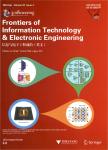Words alignment based on association rules for cross-domain sentiment classification
基于关联规则进行词对齐的跨领域情感分类算法(英文)作者机构:Faculty of Information Technology Beijing University of Technology School of Electrical and Electronic Engineering University College Dublin Visualization and Intelligent Systems Laboratory University of CaliforniaRiverside
出 版 物:《Frontiers of Information Technology & Electronic Engineering》 (信息与电子工程前沿(英文版))
年 卷 期:2018年第19卷第2期
页 面:260-272页
核心收录:
学科分类:0810[工学-信息与通信工程] 0808[工学-电气工程] 0809[工学-电子科学与技术(可授工学、理学学位)] 0839[工学-网络空间安全] 081203[工学-计算机应用技术] 08[工学] 0835[工学-软件工程] 0812[工学-计算机科学与技术(可授工学、理学学位)]
基 金:Project supported by the National Natural Science Foundation of China(Nos.61703013,91546111,91646201,61672070,and61672071) the Beijing Municipal Natural Science Foundation(No.4152005) the Key Projects of Beijing Municipal Education Commission(Nos.KZ201610005009 and KM201810005024) the International Cooperation Seed Grant from Beijing University of Technology of 2016(No.007000514116520)
主 题:Sentiment classification Cross-domain Association rules
摘 要:Automatic classification of sentiment data(e.g., reviews, blogs) has many applications in enterprise user management systems, and can help us understand people's attitudes about products or services. However, it is difficult to train an accurate sentiment classifier for different domains. One of the major reasons is that people often use different words to express the same sentiment in different domains, and we cannot easily find a direct mapping relationship between them to reduce the differences between domains. So, the accuracy of the sentiment classifier will decline sharply when we apply a classifier trained in one domain to other domains. In this paper, we propose a novel approach called words alignment based on association rules(WAAR) for cross-domain sentiment classification,which can establish an indirect mapping relationship between domain-specific words in different domains by learning the strong association rules between domain-shared words and domain-specific words in the same domain. In this way, the differences between the source domain and target domain can be reduced to some extent, and a more accurate cross-domain classifier can be trained. Experimental results on Amazon~ datasets show the effectiveness of our approach on improving the performance of cross-domain sentiment classification.



